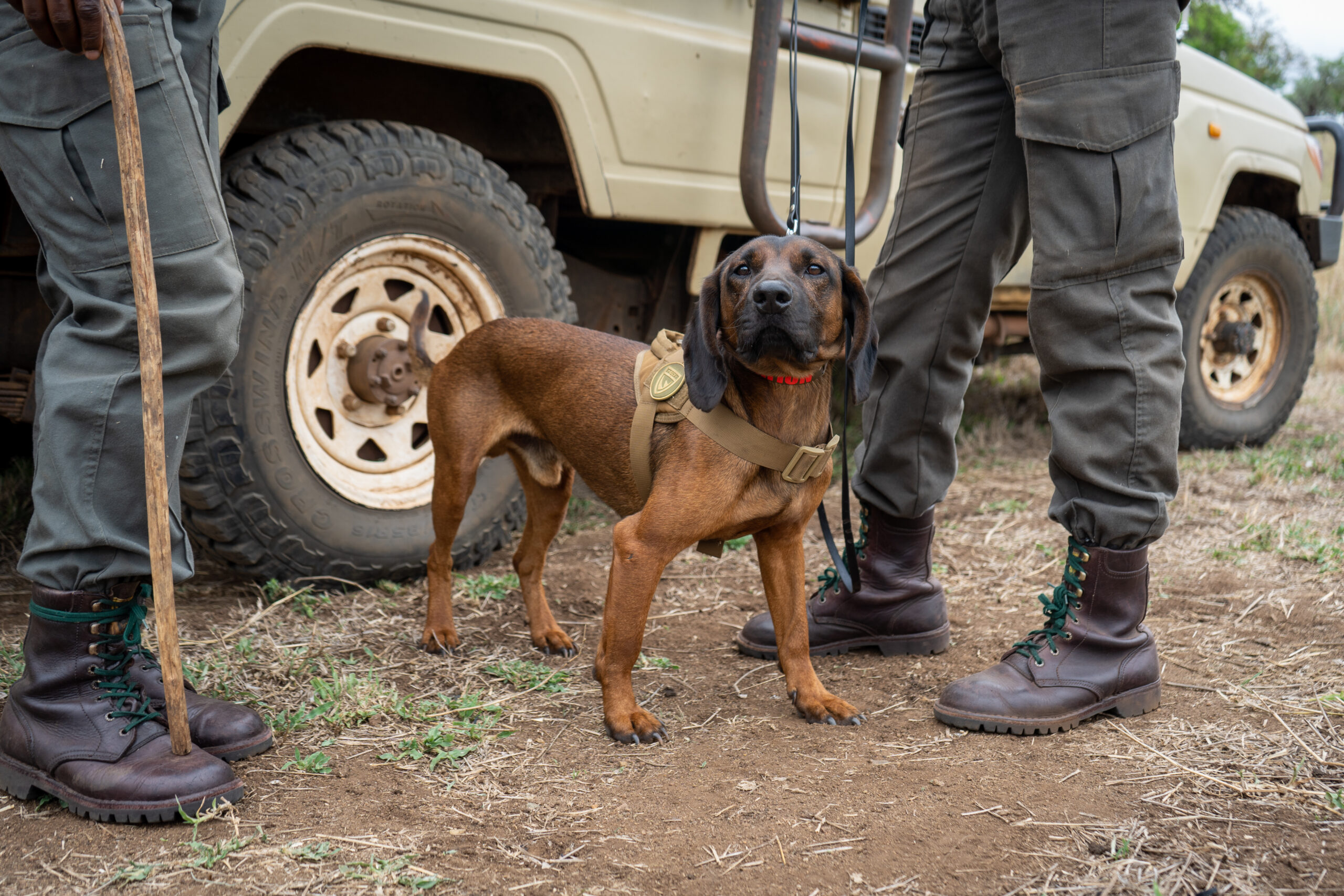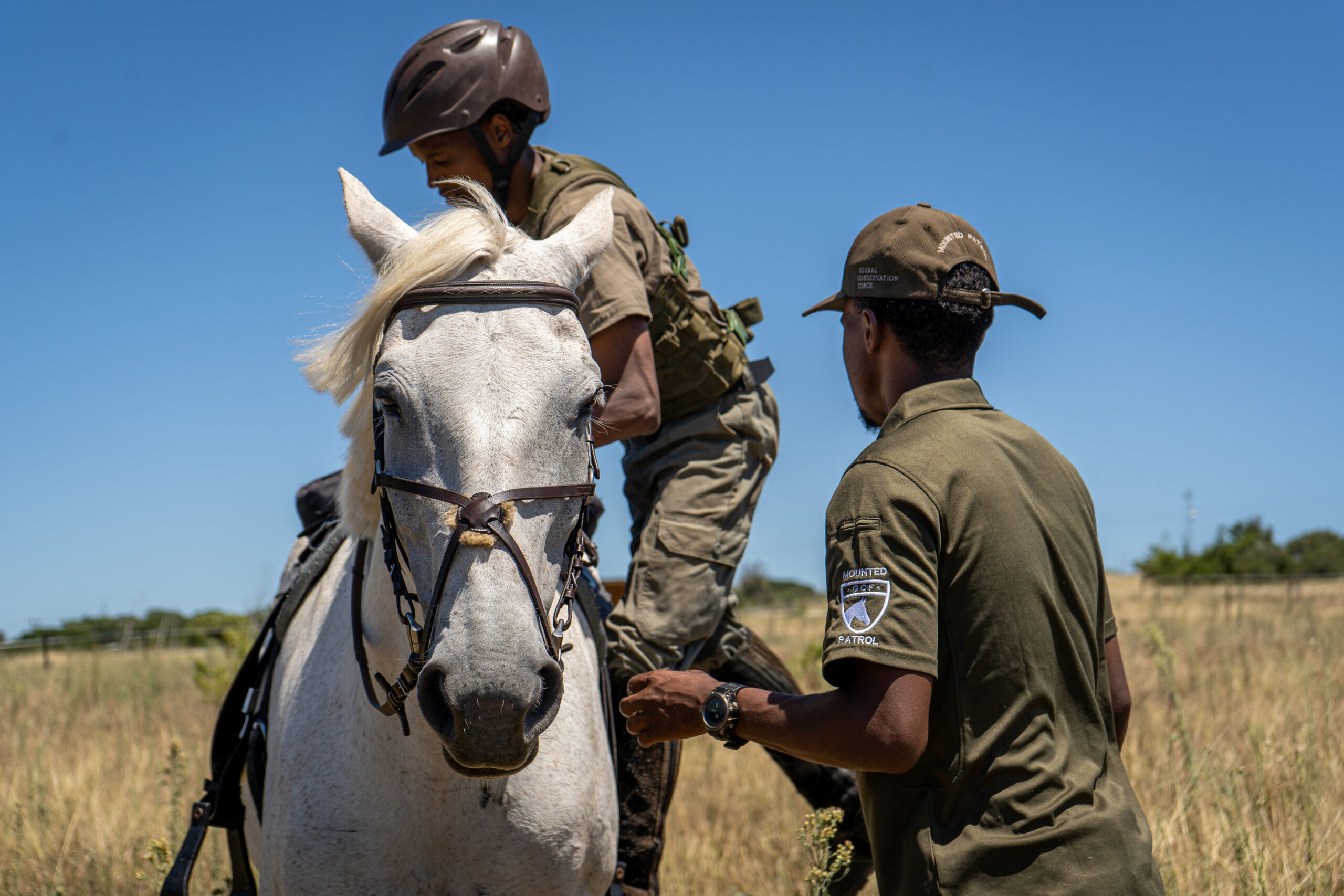Rhino Protection
Operation Rhino Shield
Operation Rhino Shield – Our flagship conservation effort where we focus our efforts to save the Worlds’ remaining rhino populations and species. We have a multi-focal approach in which we focus in 5 primary categories; Anti-poaching units, community based conservation, education & awareness, technology, and combatting international wildlife trafficking.
At the end of 2015, five species of rhinos remained in the world: three (3) Asian rhino species, and two (2) African rhino species. Three (3) of these species – Black Rhinos, Sumatran Rhinos, and Javan Rhinos – were listed as Critically Endangered by the International Union for Conservation of Nature (IUCN). The IUCN lists species as Critically Endangered when “the best available evidence indicates . . . [the species is] facing an extremely high risk of extinction in the wild.” The other two rhino species – White Rhinos and Greater-One Horned Rhinos – are listed as Near Threatened and Threatened, respectively, after conservation interventions increased their populations after severe population declines a century ago. Rhinos around the world face the same challenges: poaching (illegal hunting) for the international rhino horn trade, habitat loss, and civil unrest. Many cultures believe a rhino’s horn has medicinal properties or is a status symbol; however, rhino horn is composed of keratin, the same protein that composes human hair and fingernails. Rhinoceros horn has no medicinal property, and is not a status symbol.
Asian Rhinoceros
Asia is currently home to three species of rhinos: Javan Rhinos, Sumatran Rhinos, and Greater One-Horned Rhinos.
Javan Rhinoceros
(Rhinoceros sondaicus):
As of 1996, the IUCN listed the Javan Rhinos as Critically Endangered. Although the historic accounts failed to distinguish between rhino species, the historic range of Javan Rhinos likely included Bangladesh, Myanmar, Thailand, Lao People’s Democratic Republic, Cambodia, Vietnam, southern China, Malaya Peninsula, Sumatra, and Java. In 2010, the last wild Javan Rhino outside of Java was poached in the Cát Tiên National Park, Vietnam. Currently, the only surviving population of Javan Rhinos – approximately 40-60 rhinos – reside on the western tip of Java in the Ujung Kulon National Park.
In addition to poaching, the Javan Rhino population will likely be limited by Ujung Kulon National Park’s carrying capacity of about 50 rhinos. With a small population, Javan rhinos may be threatened by disease.
Javan Rhinos have been protected by CITES Appendix I since 1975. Anti-Poaching Units are working to protect the species from poachers.
Sumatran Rhinoceros
(Dicerorhinus sumatrensis):
As of 1996, the IUCN listed Sumatran Rhinos as Critically Endangered. In 2008, the IUCN justified the continued listing of Sumatran Rhinos as Critically Endangered due to the severe declines of greater than 80% of the population over three rhino generations.
Although the historic accounts failed to distinguish between rhino species, the historic range of Sumatran Rhinos likely included Bhutan, India, China, Myanmar, Thailand, Cambodia, Lao People’s Democratic Republic, Vietnam, Malay Peninsula, Sumatra, and Borneo. Currently, fewer than 10 Sumatran rhinos live in the Malay Peninsula, and less than 100 Sumatran rhinos live in three separated national parks on Sumatra.
In addition to poaching, Sumatran Rhinos face the challenge of population fragmentation. The small populations are at risk for inbreeding.
Javan Rhinos have been protected by CITES Appendix I since 1975. Anti-Poaching Units are working to protect the species from poachers.
Greater One-Horned Rhinoceros
(Rhinoceros unicornis):
In 2008, the IUCN upgraded the Greater One-Horned Rhinos’ listing from Endangered to Vulnerable due to strict protections increasing the overall population; even though the population was declining in some areas. Historically, Greater One-Horned Rhinos’ range included India, Pakistan, Nepal, Bangladesh, and Bhutan. Rapid population declines until the 1900s left the Greater One-Horned Rhinos with less than 200 individuals in India and Nepal.
Conservation and anti-poaching efforts increased the Greater One-Horned Rhino Populations in India and Nepal. However, as of 2000, the Nepalese population has been declining once again due to increased poaching following political instability in Nepal.
The initial cause of the Greater One-Horned Rhino decline was due to conversion of grasslands to agricultural development, which increased human-wildlife conflict and made rhinos more accessible to hunters. In addition to poaching, Greater One-Horned Rhinos face declining quality of habitat. Furthermore, 70% of the Greater One-Horned Rhinos’ global population resides in Kaziranga National Park, India, which leaves the population at risk if disease, natural catastrophe, or other catastrophe were to affect Kaziranga National Park.
Greater One-Horned Rhinos have been protected by CITES Appendix I since 1975. Anti-Poaching Units are working to protect the species from poachers.
African Rhinoceros
Africa is currently home to two species of rhinos: Black Rhinos and White Rhinos.
Black Rhinoceros
(Diceros bicornis):
As of 1996, the IUCN listed Black Rhinos as Critically Endangered. In 2011, the IUCN justified the continued listing of Black Rhinos as Critically Endangered citing the current population was 90% lower than it had been three rhino generations ago. Once the most populous rhinoceros in Africa, the four subspecies of Black Rhinos ranged through Cameroon, and almost all of Africa south of Angola, Zambia, Tanzania, and Kenya. As of 2011, the IUCN listed Western Black Rhinoceros (Diceros bicornis ssp. longipes) as extinct. Three other subspecies of Black Rhinos – Southern-central Black Rhinoceros (Diceros bicornis minor), South-Western Black Rhinoceros (Diceros bicornis bicornis), and Eastern Black Rhinoceros (Diceros bicornis michaeli) – still remain. Currently, nearly all wild Black Rhinos exist in South Africa, Namibia, Zimbabwe, and Kenya.
In addition to poaching, Black Rhinos faced the challenges of civil unrest in Angola, Cameroon, Central Africa Republic, Chad, Democratic Republic of the Congo, Mozambique, Namibia, Rwanda, Somalia, Sudan, and Uganda. Civil unrest exacerbates the lack of political will, a lack of conservation efforts by some governments, and poverty; resulting in weakened protections for wildlife against poachers. Furthermore, loss of habitat for settlement and agriculture leaves Black Rhinos vulnerable to threats from habitat changes, competing species, and invasive plant species.
Black rhinos have been protected by CITES Appendix I since 1977. Black rhino populations are increasing where conservation efforts and anti-poaching units are working to protect the species from poachers.
White Rhinoceros
(Ceratotherium simum):
As of 2002, the IUCN listed White Rhinos as Near Threatened. Scientists are currently debating whether there are two subspecies of White Rhinos, or if Northern White Rhinoceros (Ceratotherium simum cottoni) and Southern White Rhinoceros (Ceratotherium simum simum) are two separate species; the IUCN currently lists Northern White Rhinos and Southern White Rhinos as two subspecies.
Northern White Rhinos (NWR) and Southern White Rhinos (SWR) have historically geographically distinct ranges. Historically, NWR were in Uganda, Chad, Sudan, Central African Republic, and the Democratic Republic of the Congo; however by the end of 2015, the remaining three NWR reside at the Ol Pejeta Conservancy, Kenya. All three NWR are related and are non-reproductive. Historically, SWR were in South Africa, Namibia, Botswana, Zimbabwe, Mozambique, and Swaziland; currently, SWR are the most populous of all rhino species and subspecies, with the majority of them residing in South Africa.
In addition to poaching, NWR faced the challenges of civil wars in the Democratic Republic of the Congo and Sudan; under those conditions, poaching escalated and there has been no evidence of live rhinos since 2007.
The SWR was almost extinct by the beginning of the 1900s, with the last 20-50 SWR in KwaZulu-Natal, South Africa. Conservation, translocation, and anti-poaching efforts increased the SWR population to over 20,000 animals a few years ago. However, in recent years, poaching has increased rapidly due to significant increases in black market prices for rhino horn. Additionally with the majority of SWR on private reserves in South Africa and private owners disinclined to keep rhinos due to increased security costs, conservation budgets have been reduced; live rhino sales to private owners fund South Africa’s conservation funds. With the poaching trend continuing, the IUCN projects the SWR population will begin to decline in 2016; meaning the number of poached rhinos will exceed rhino births.
White rhinos were initially protected by CITES Appendix I as of 1977, but were downgraded to CITES Appendix II protections in 1994 due to increased populations. Anti-Poaching Units are continuing to protect the species from poachers.
Our Needs
- Tactical patrol back pack – $50
- Bear Mace – $22 (good for long range defensive spraying for dangerous animals or poachers)
- Patrol Boots – $ 120
- Boot insole – $12
- Wool Boot Socks – $ 10
- Lightweight gas stove – $ 30
- Lightweight sleeping pad – $ 30
- LED flashlight (lightweight and small 300 lumen) – $ 10
- Hydration bladder (platypus) – $ 24
- Lightweight patrol Binoculars – $ 20
- Tactical Advantage drone – $2200 (full set up with extra batteries)
- Two way radio set of 20 (ranger team) BaoFeng – $250
- Anti Poaching Ranger training for an African citizen – $1200
- Two door Toyota Truck for patrol – $ 17,000
- Toyota Truck monthly operating costs – $300
- New off-road tires for Patrol Truck- $ 500
- Veterinary Rehabilitation costs for injured or orphaned animals – $1000



- Emslie, R. 2011. Diceros bicornis ssp. longipes. The IUCN Red List of Threatened Species 2011: e.T39319A10198340. http://dx.doi.org/10.2305/IUCN.UK.2011-2.RLTS.T39319A10198340.en
- Emslie, R. 2012. Ceratotherium simum. The IUCN Red List of Threatened Species 2012: e.T4185A16980466. http://dx.doi.org/10.2305/IUCN.UK.2012.RLTS.T4185A16980466.en
- Emslie, R. 2012. Diceros bicornis. The IUCN Red List of Threatened Species 2012: e.T6557A16980917. http://dx.doi.org/10.2305/IUCN.UK.2012.RLTS.T6557A16980917.en
- IUCN Standards and Petitions Subcommittee. 2014. Guidelines for Using the IUCN Red List Categories and Criteria. Version 11. Prepared by the Standards and Petitions Subcommittee. http://www.iucnredlist.org/documents/RedListGuidelines.pdf
- Talukdar, B.K., Emslie, R. Bist, S.S., Choudhury, A., Ellis, S., Bonal, B.S., Malakar, M.C., Talukdar, B.N & Barua, M. 2008: Rhinoceros unicornis. The IUCN Red List of Threatened Species 2008: e.T19496A8928657. http://dx.doi.org/10.2305/IUCN.UK.2008.RLTS.T19496A8928657.en
- TRAFFIC. Javan Rhino extinct in Viet Nam. Dated: October 25, 2011. http://www.traffic.org/home/2011/10/25/javan-rhino-extinct-in-viet-nam.html Viewed: December 2015.
- TRAFFIC. TRAFFIC’s engagement on African rhinoceros conservation and the global trade in rhinoceros horn. http://www.traffic.org/rhinos/ Viewed: December 2015.
- Van Strien, N.J., Manullang, B., Sectionov, Isnan, W., Khan, M.K.M, Sumardja, E., Ellis, S., Han, K.H., Boeadi, Payne, J. & Bradley Martin, E. 2008. Dicerorhinus sumatrensis. The IUCN Red List of Threatened Species 2008: e.T6553A12787457. http://dx.doi.org/10.2305/IUCN.UK.2008.RLTS.T6553A12787457.en
- Van Strien, N.J., Steinmetz, R., Manullang, B., Sectionov, Han, K.H., Isnan, W., Rookmaaker, K., Sumardja, E., Khan, M.K.M & Ellis, S. 2008. Rhinoceros sondaicus. The IUCN Red List of Threatened Species 2008: e.T19495A8925965. http://dx.doi.org/10.2305/IUCN.UK.2008.RLTS.T19495A8925965.en

Want to volunteer with us?
Global Conservation Force brings together a team of experts, volunteers, and community members to work towards saving endangered species.
CONNECT
- P.O. Box 956 Oceanside, CA 92049
- info@globalconservationforce.com
- EIN 474499248
- Copyright 2024. All Rights Reserved. Powered by Wild Media.






